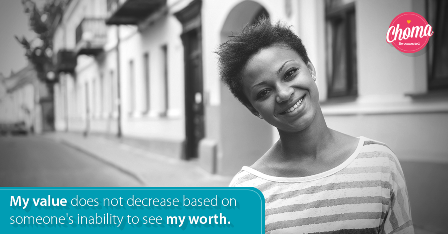South Africa -- I'm staring at the little screen of the Galaxy S3 totally transfixed, as I try to maneuver my little avatar through the exciting online world full of boys, friendships, schools, parties, money and drugs. In the background there is encouraging music, my avatar girl jumps up and down and is full of beans. Before the journey started, I was even able to pick out a hairstyle, clothes, shoes and define my three major goals in life: master my education, climb a mountain and be content with my job. One level further means you've reached a life goal.
Alex Kayle, employee of the South African health organization HIVSA, patiently explains the rules of the game to me. For example, I am allowed to meet up with boys and to sleep with them too, but only if I have collected a condom beforehand. There are also bonus points if I commit myself to just one partner, but it's really not so easy to distinguish all the boys from each other. The tempo increases the whole time, and I obviously become too adventurous - because suddenly the fun is over and I've lost.
Interactive online format "Choma"
The online game has been available in the app store for a few weeks and is fairly popular -- I have already discovered it on the mobile phones of a few acquaintances here in South Africa. It is part of a whole series of interactive, online formats developed for the Choma Project to help young girls with questions about boys, sex, relationships, but also fashion, lifestyle and friendship.
"Choma means best friend, and that's what we all are here", says Alex. "I am a choma, the girls are chomas, all together we form a community in which we can talk openly about any topic at all."
Choma was launched in October 2013 in partnership with the Charlize Theron Outreach Project and the German Society for International Cooperation (GIZ). At that time, HIVSA was running a few projects looking after young, pregnant and HIV-positive women. But there was no contact point for young women who were struggling with really everyday questions about love, school, health and their future. Choma is aimed at this target group, and wants to help them by way of counseling and education work.
Only 26 percent of girls know about the infectiousness of HIV
Of the 400,000 new HIV infections each year in South Africa, around half are young girls between 15 and 25 years of age -- they contract the virus at four times the rate of boys at the same age. Many young girls are still not properly educated about the risks of the sexually transmitted disease. In one study, only about a third of all surveyed said that they use a condom during sexual intercourse, almost the same number are aware of the contagiousness of HIV.
Eighty percent think that they are not at risk of infection because they trust their partner or because they want to wait to have sex. The problem is that the young girls who make up the major risk group for HIV infection don't perceive this very risk. On the contrary -- they act naively, have sex very young, without a condom, with different partners, who are mostly much older.
Education programs have so far remained unsuccessful. In school classes the topic receives scant attention, and those who no longer go to school can no longer be reached by those programs anyway. Often girls talk to their girlfriends about it, but they're just as poorly informed.
At home, conversations about sex and relationships are taboo. So it is high time that fresh, new ideas and projects are developed, to help these girls out where politics and society have previously failed.
How social media can educate about HIV
By now, about 80 percent of all students in South Africa 14 years and over own a mobile phone, and use it to get online. Via social media channels such as Facebook or Mxit, they chat with one another, post, comment, blog, argue with each other. Mxit alone boasts almost 10 million active users, mostly between 12 and 18 years old.
Choma can be downloaded via Mxit, and more than 80 per cent of chomas use the platform on their mobile. Since the launch in October 2013, around 800,000 girls have downloaded the online magazine -totally eclipsing the expectations of the project organisers.
24 hours a day, two moderators tend to the questions that the girls send in to "Ask Choma." The chat can be carried out publicly or privately. Profile pictures and usernames can be designed as the girls wish, in order to remain anonymous.
Once a week, Dr. Sindi gives tips on health and wellbeing on her blog. Alongside the numerous online offers, Choma is also trying to get people involved offline. For this, they offer workshops in schools and universities, which particularly committed Chomas can help to organise.
Looking for new funding models
Because the project is so successful and the girls' questions are increasing every day (10,000 in the past three months), more employees need to be hired. Jean Armstrong, the director of HIVSA, explains to me that the organization is on the lookout for new, sustainable funding models, in order to continue working independently in the long-term.
To do so, she also wants to encourage private donors and companies to support the project. In South Africa, that is not as easy as I have found in my interviews with other organisations during my lab around the world. What is lacking above all is the willingness on the part of politicians to support the work of non-government organisations through public campaigns and funding programs.
In the long run, Choma wants to contribute to an HIV-free generation. That might sound like an ambitious goal, but it's not impossible. What's important is that the urgency of the problem, as well as the successes of these kinds of projects, are finally acknowledged both by politicians and by society at large.
This article is part of the series "lab around the world." You can find more information here.
This post originally appeared on HuffPost Germany and was translated into English.

